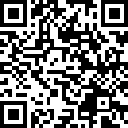Learn About Challenging Behaviors
Of the approximately 16 million people in the United States who have an Intellectual or Developmental Disability (I/DD), about 12.5% (2 million) display destructive behavior. As many as 62% of people described as having severe Autism Spectrum Disorder (ASD) or (I/DD) have comorbid Challenging Behaviors (CB).

The most common problematic challenging behaviors include physical aggression towards others, self-injury, elopement and property destruction.

The causes of comorbid challenging behaviors can be complex, complicated, multifaceted and difficult to identify. Many factors and/or combinations of factors can cause, contribute to or exacerbate challenging behaviors. Factors that can cause and/or contribute to challenging behaviors may be physical, medical, mental, cognitive, sensory, functional, regulatory or environmental in nature. Challenging behaviors can even emerge in response changes in family dynamics or caregiver arrangements.
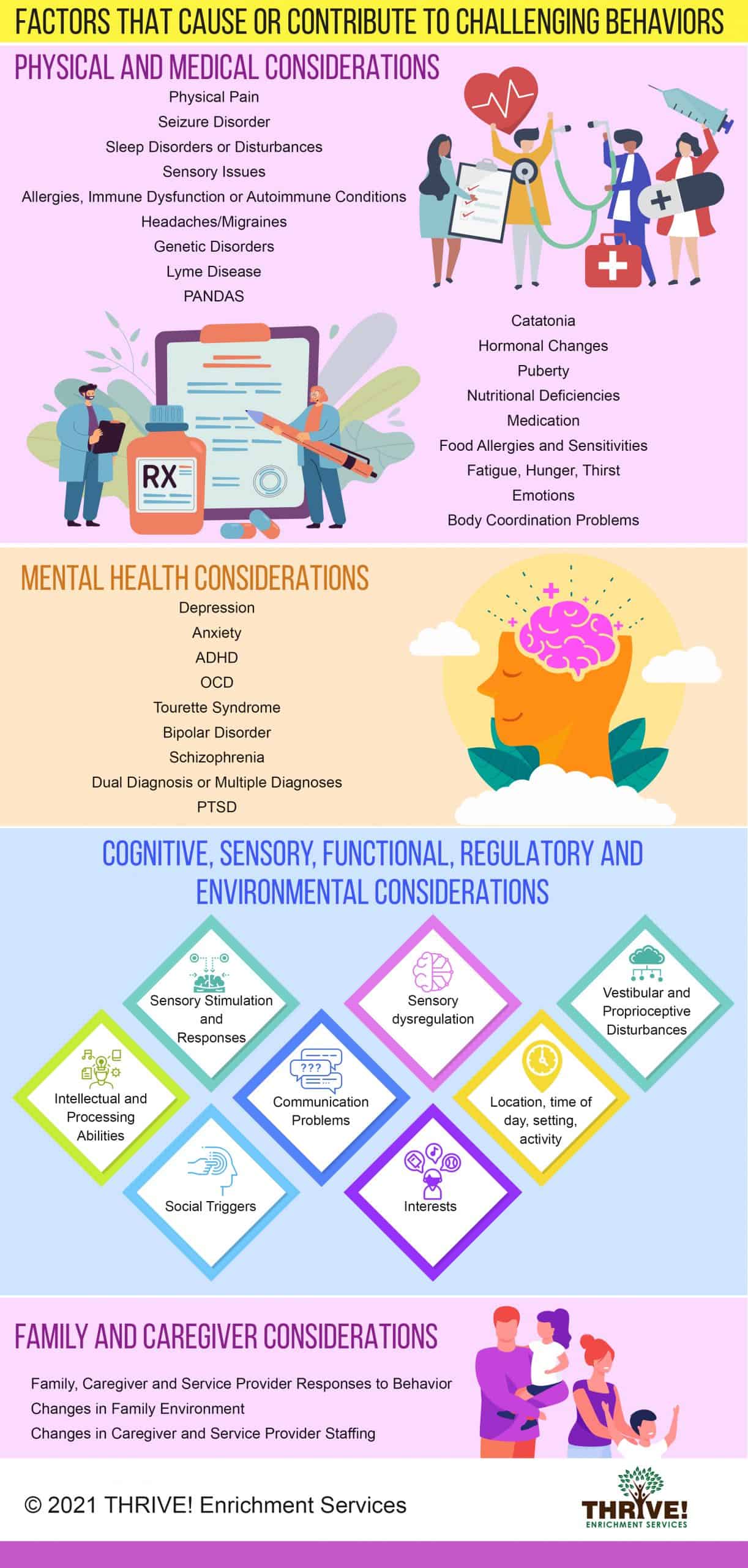
There are a number of strategies that can be employed for effectively managing challenging behaviors. These include medical evaluation, medication management, functional behavior assessment, behavioral interventions, behavior management training, social skills training, adaptive skills training, therapy and disposition planning.
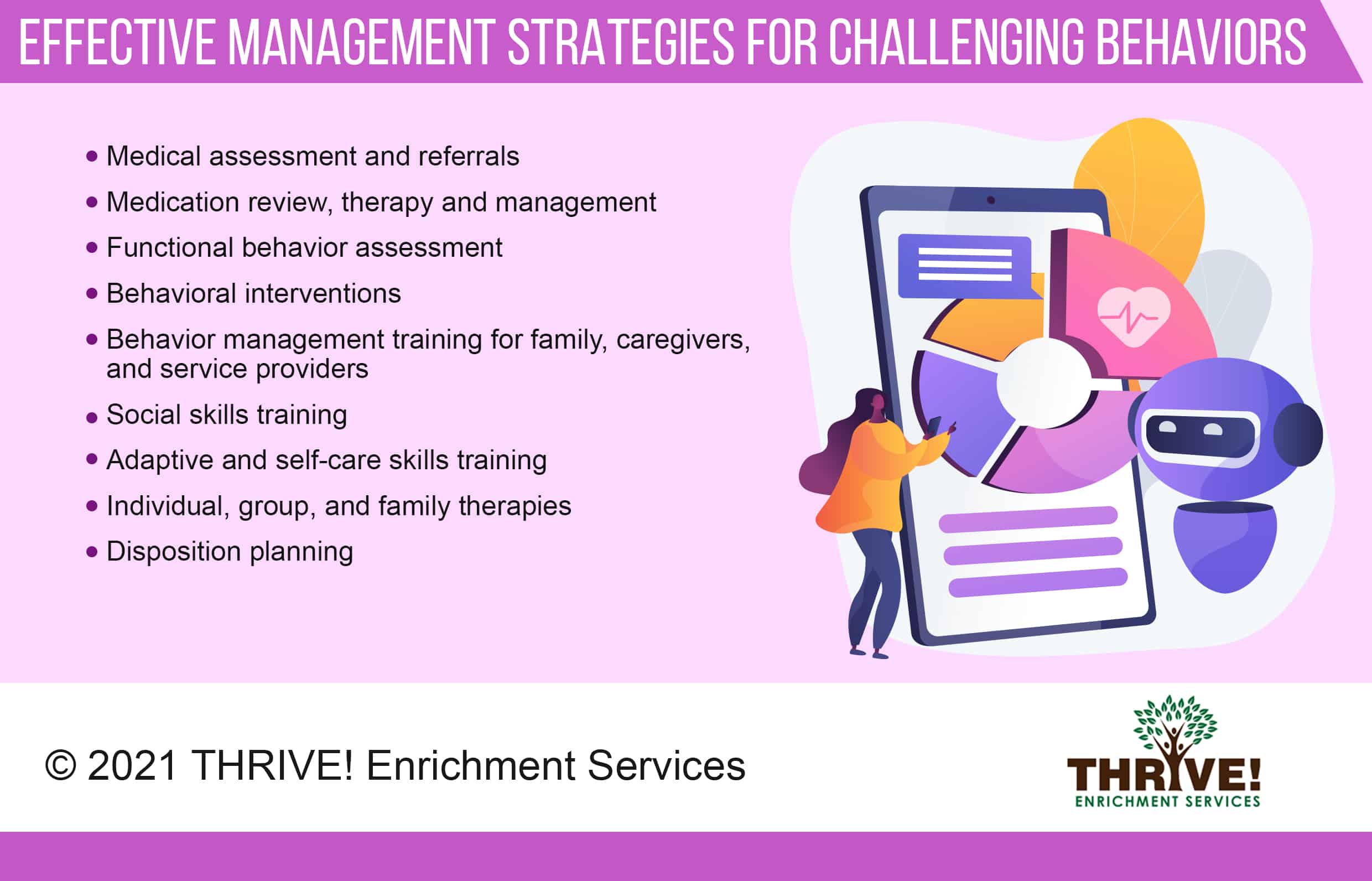
Challenging behaviors can be treated successfully and, in many cases, their frequency, severity, intensity and duration can be dramatically reduced. Some of the most effective treatments and interventions for challenging behaviors are applied behavior analysis (ABA), cognitive behavior therapy (CBT), dialectical behavior therapy (DBT), functional communication training (FCT), parent management training (PMT), reinforcement strategies, and exposure and response prevention (ERP).

Many individuals who have challenging behaviors need a very high level of care, and they are among the most vulnerable, marginalized, isolated, overlooked and underserved people on the planet.
Challenging behaviors often lead to serious negative outcomes for individuals who have them and their families.
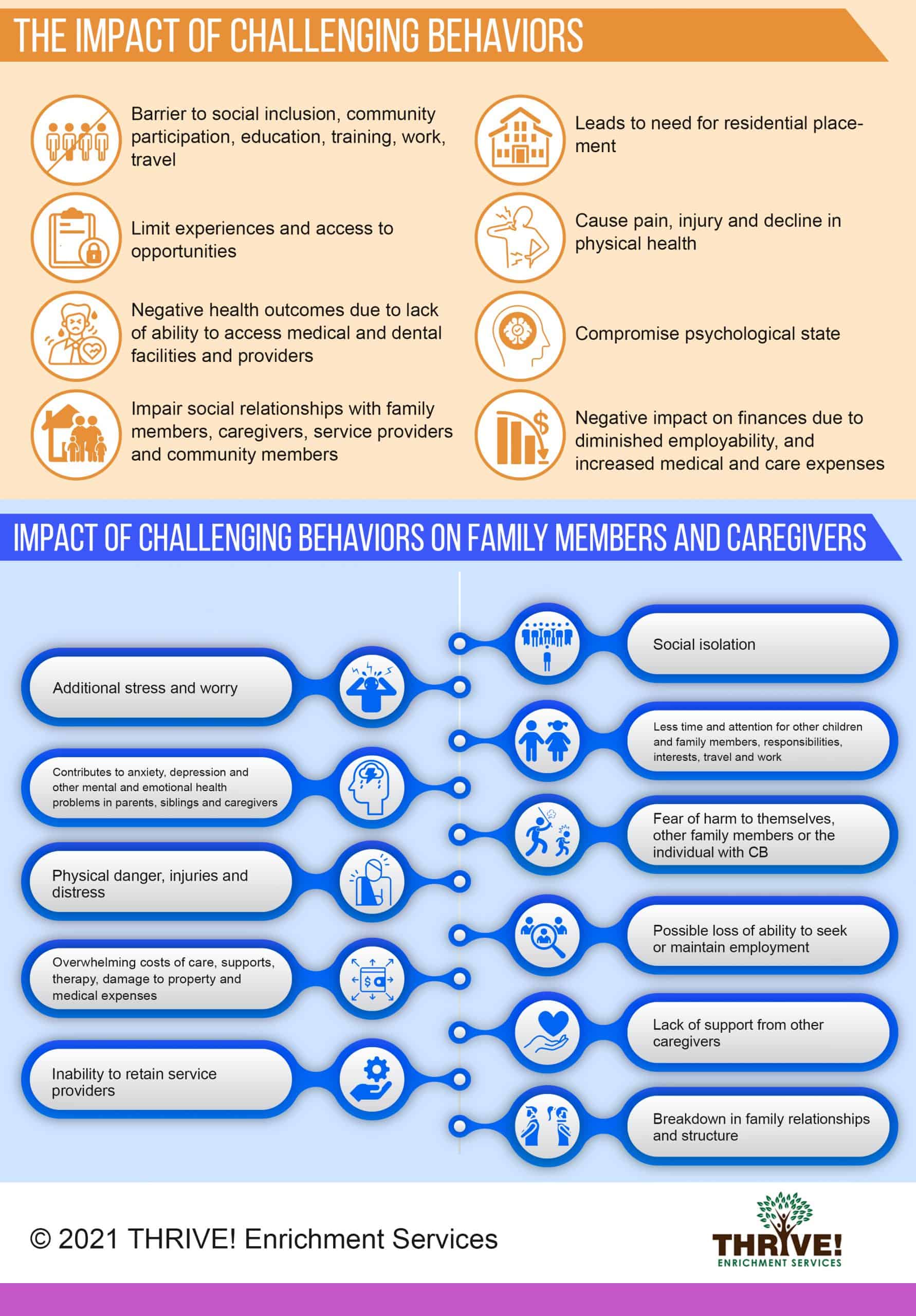
Some 70% of individuals who have I/DD live with their parents or other unpaid family caregivers. These caregivers provide an average of 57 hours of support per week.
Understandably, the majority of caregivers reported being stressed; 48% of them reported being very or extremely stressed. The vast majority of them (95%) said their caregiving responsibilities negatively impacted their work.
Challenging behaviors lead to social isolation and are barriers to community participation. Only 17% of adults with I/DD receive home and community based services.
Challenging behaviors limit access to opportunities for education, training, work, recreation and travel. Less than 20% of working age individuals with I/DD have a paid job in the competitive workforce.
Challenging behaviors can even result in physical danger, injuries or death. People who have ASD are 40 times more likely to die from injuries than their nondisabled peers.

Challenging behaviors contribute to negative health outcomes by making it difficult to obtain appropriate medical and dental care. People with I/DD live 10-15 fewer years than their nondisabled counterparts. People who are severely impacted by ASD have half the life expectancy (36.2 years vs. 72 years) of their nondisabled peers.
Challenging behaviors increase the likelihood of needing to visit the emergency room. Children with ASD visit the emergency department 30% more, while teens with autism visit the ER 70% more and adults diagnosed with autism go to the emergency room twice as much as those without a diagnosis of autism.
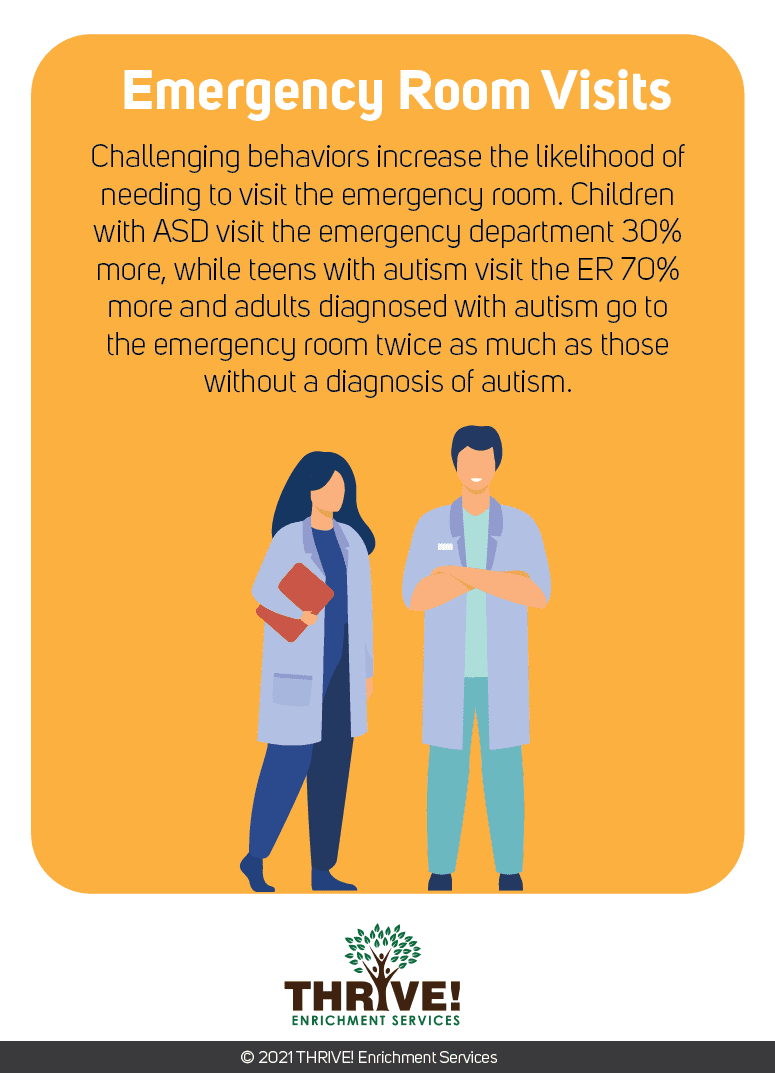
Challenging behaviors adversely affect mental and emotional wellbeing. Approximately 40% of individuals who have I/DD have a diagnosed mental illness, 30% of those are considered persistent mental illnesses. These mental illnesses include depression, anxiety, OCD, bipolar disorder and schizophrenia. Adults with autism are three times (300%) more likely to be depressed and 5 times (500%) more likely to attempt suicide than other adults.
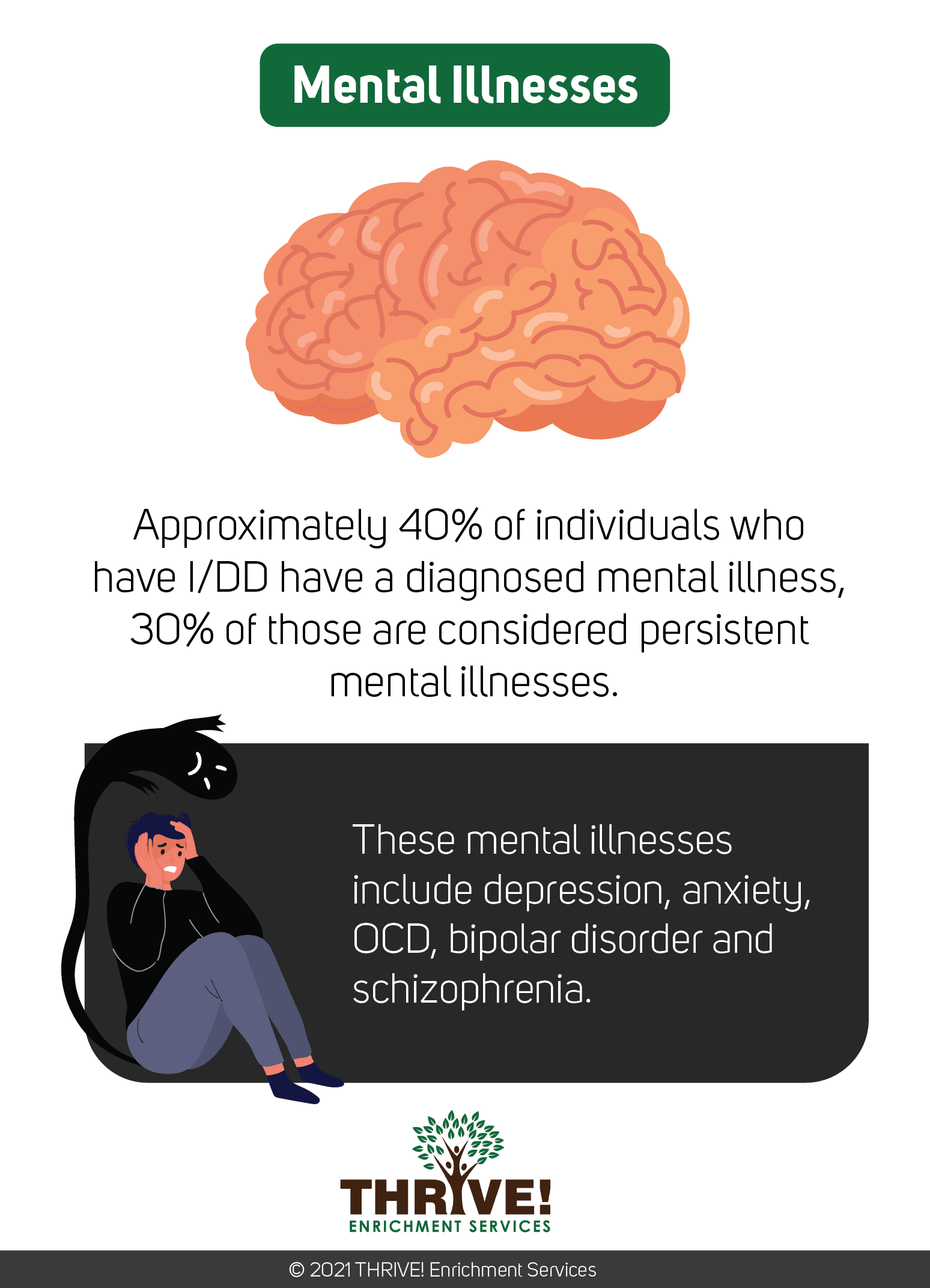
Challenging behaviors can increase the risk of violent and sexual victimization. Individuals with I/DD are twice (200%) as likely as the general population to experience some form of violent victimization. They are 7 times (700%) more likely to experience sexual victimization.

People who have challenging behaviors are at a greater risk of being killed by law enforcement officers. One third (33.3%) to one half (50%) of individuals who are killed by police officers have an intellectual or developmental disability.
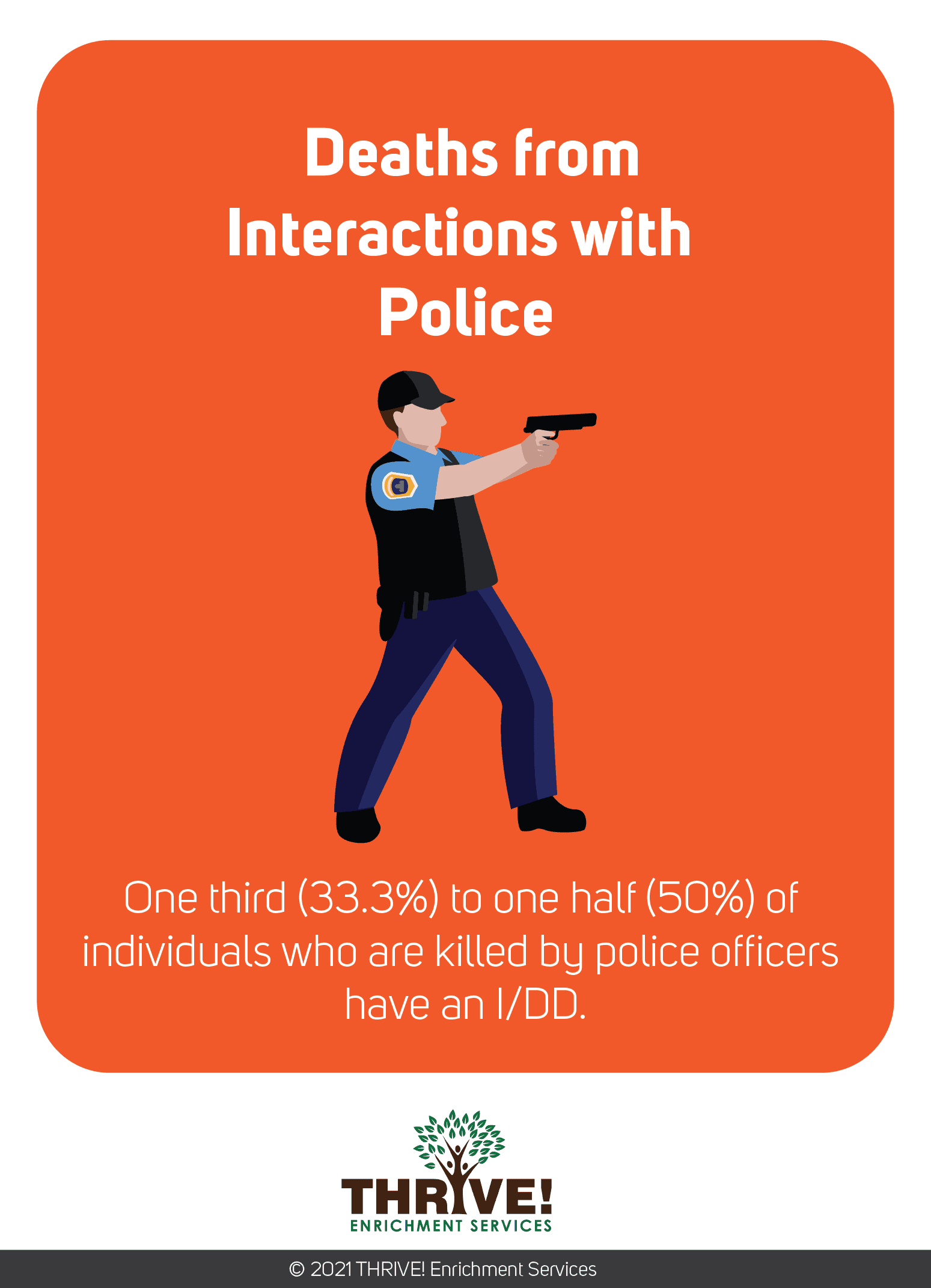
As of January 2020, there were nearly 20,000 adults with Autism or I/DD on the waiting list to receive vital services and supports in Illinois. Fortunately that number has decreased, but there are still far too many people waiting to receive assistance. On average, they wait 7 years. Those who have challenging behaviors often wait forever

THRIVE! is committed to changing this. With your help, we are determined to help individuals and families that are affected by comorbid challenging behaviors. Support our work so, together, we can succeed at transforming lives, eliminating barriers to inclusion and creating opportunities.
Sources: Vohra, Madhavan & Sambamoorthi (2016); Croen, Zerbo, Qian, Massolo, Rich, Sidney & Kripke (2015); Desrochers and Fallon (2014); Felce and Kerr (2013); Koritsas and Iacono (2012); McLean and Dornbush (2012); Yoon, Ze, Tze, & Min (2011); Matson and Rivet (2008); Rojahn, Matson, Lott, Esbensen, & Smalls (2001); Autism Speaks; Council of Autism Service Providers; International Board of Credentialing and Continuing Education Standards.


